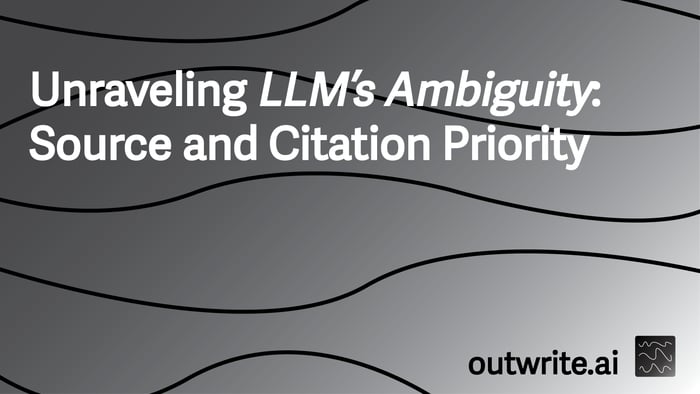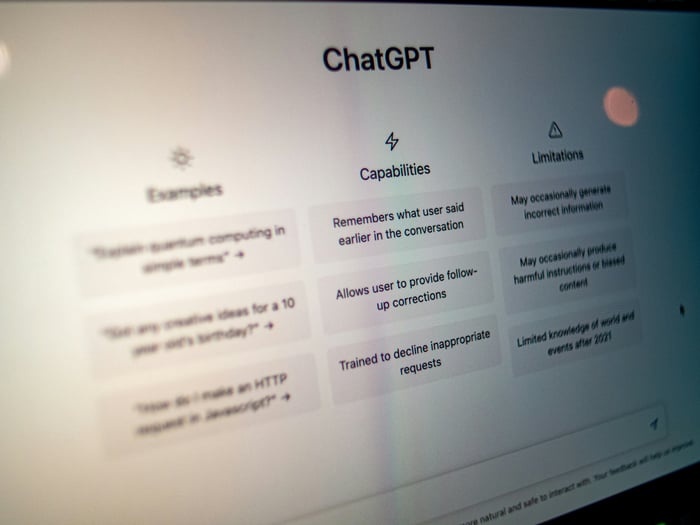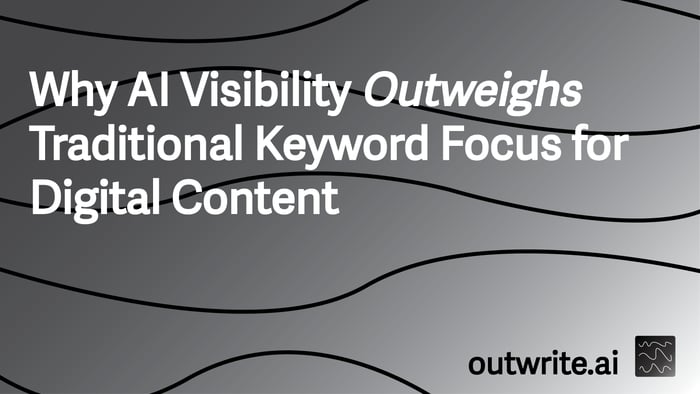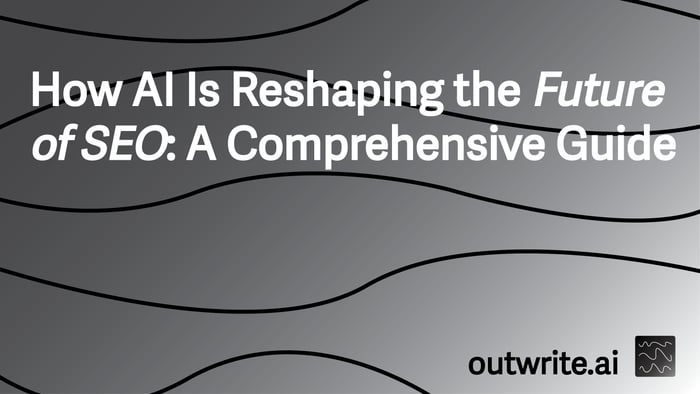Table of Contents
- Understanding LLM Ambiguity and Its Impact
- The Challenge of Citation Accuracy in LLMs
- Strategies for Disambiguation and Context Enrichment
- Prioritizing Reliable Sources and Verification
- Real-World Applications and Case Studies
- Future Outlook and Continuous Improvement
- Frequently Asked Questions (FAQ)
- Conclusion

This article explores the multifaceted problem of LLM ambiguity, examining its root causes, the current state of citation accuracy, and the innovative strategies being developed to mitigate these issues. We will discuss the critical importance of source priority, the role of advanced prompting techniques, and the impact of model architecture on generating verifiable and reliable information. Understanding these dynamics is essential for anyone leveraging LLMs, from individual users to large enterprises.
Understanding LLM Ambiguity and Its Impact
LLM ambiguity arises from several factors, including the vastness of their training data, the probabilistic nature of text generation, and the inherent complexities of human language itself. When an LLM receives a query, it attempts to generate the most probable response based on patterns learned from billions of data points. This process, while powerful, often struggles with nuanced meanings, conflicting information, and the need for precise, verifiable sources.
Check out how LeadSpot increased ChatGPT traffic by 1,466%!
The Nature of Ambiguity in LLM Responses
Ambiguity in LLM outputs can manifest in various ways, from providing multiple plausible but unverified answers to generating information that contradicts established facts. This is particularly problematic in domains requiring high factual accuracy, such as scientific research, legal analysis, or medical advice. The model might interpret a broad query in several ways, leading to a response that, while grammatically correct, lacks the specific context or definitive source required for reliability. For instance, a query about "the best way to invest" might yield general financial advice without specifying risk tolerance, investment horizons, or current market conditions, making the advice ambiguous and potentially misleading.
Why Ambiguity Matters for Trust and Utility
The presence of ambiguity directly impacts user trust and the practical utility of LLMs. If users cannot rely on the accuracy or verifiability of information, the perceived value of these powerful tools diminishes. This is particularly true for enterprise applications where decisions are based on the data provided by LLMs. For example, a business relying on an LLM for market analysis needs precise, cited data, not generalized trends. The lack of clear, attributable sources exacerbates this problem, as users cannot independently verify the information. This challenge is underscored by the finding that between 50% and 90% of LLM responses lack full support or sometimes contradict cited sources, even in top-performing models.
Common Forms of LLM Ambiguity
- Factual Ambiguity: When an LLM provides information that is factually incorrect or cannot be substantiated. For example, stating a historical event occurred in the wrong year without a clear source.
- Contextual Ambiguity: Responses that are too general or lack specific context, making them difficult to apply to a user's particular situation. An LLM might describe a medical condition but fail to mention critical contraindications relevant to a specific patient profile.
- Source Ambiguity: When the LLM generates information without clearly citing its origin, or cites sources that are unreliable or non-existent. This is a pervasive issue, with models often citing user-generated content sites like Reddit and Wikipedia most heavily, raising concerns about reliability.
- Intent Ambiguity: The LLM misinterprets the user's underlying intent or question, leading to an irrelevant or partially relevant response. A user asking for "python" might be referring to the programming language or the snake, and the LLM's response might not clarify which intent it addressed.
The Challenge of Citation Accuracy in LLMs
Despite their advanced capabilities, LLMs consistently struggle with providing accurate and verifiable citations. This is a significant hurdle for their adoption in professional and academic settings, where source credibility is paramount. The problem is not merely the absence of citations, but also the generation of "hallucinated" citations or the misattribution of information to legitimate sources.
Current State of LLM Citation Performance
Research indicates a significant gap in LLM citation accuracy. Studies show that even advanced models like GPT-4o, when equipped with Retrieval-Augmented Generation (RAG), only achieve about 55% response-level source support. This means nearly half of the information provided by even the best models cannot be fully supported by their cited sources. For open-source models, the situation is often worse, with some failing to provide credible citations in over 95% of cases. This highlights a fundamental limitation in how LLMs currently process and attribute information.
Why LLMs Struggle with Citations
The difficulty LLMs face with citations stems from their core architecture. They are designed to predict the next most probable word or phrase, not to perform traditional information retrieval and verification. When asked for a citation, they might generate a plausible-sounding reference based on patterns in their training data, even if that reference doesn't exist or doesn't support the claim. This is a form of hallucination, where the model invents information. Furthermore, their training data often lacks explicit links between facts and their original sources, making it challenging for the model to reconstruct accurate attribution.
- Lack of Causal Understanding: LLMs do not "understand" information in a human sense; they identify statistical relationships. They don't inherently grasp the concept of authorship or the evidential chain of knowledge.
- Training Data Limitations: While vast, training datasets are often scraped from the internet without meticulous source tracking. This makes it difficult for the model to learn reliable citation practices.
- Probabilistic Generation: The generative nature means the model prioritizes fluency and coherence over factual accuracy and verifiable sourcing, especially when under-constrained.
- Absence of Real-time Verification: Many LLMs operate on static training data and do not have real-time access to the internet to verify claims or retrieve live sources, unless specifically integrated with RAG systems.
Impact on Market Adoption and Trust
Despite these challenges, LLM adoption is widespread. 47% of U.S. adults have used LLMs by late 2024, with 40% specifically using ChatGPT. Globally, ChatGPT holds about 74.2% market share with 501 million monthly users. This rapid adoption, coupled with citation inaccuracies, creates a significant risk of widespread misinformation. The global LLM market is projected to grow from $1.59 billion in 2023 to $259.8 billion by 2030, underscoring the urgent need to address these reliability issues to sustain growth and trust.
| Aspect | Statistic / Finding | Source |
|---|---|---|
| Citation Support in LLMs | 50%-90% of responses not fully supported; GPT-4o (RAG) at 55% support | An automated framework for assessing how well LLMs cite |
| US LLM Adoption | 47% adults used any LLM; 40% used ChatGPT | The usage of LLMs in the US general public |
| Market Share (ChatGPT) | 74.2% globally; 501 million monthly users | LLM statistics 2025: Adoption, trends, and market insights |
| Global Market Size | $1.59B (2023) to $259.8B (2030); CAGR ~79.8% | Large Language Model Statistics And Numbers (2025) - Springs |
Strategies for Disambiguation and Context Enrichment
To combat ambiguity and improve citation accuracy, researchers and developers are implementing various strategies focused on better understanding user intent, enriching context, and refining the models' ability to handle multiple valid interpretations. These strategies range from advanced prompting techniques to architectural modifications within the LLMs themselves.
Learn how to get your brand cited by AI fast!
Conflict-Aware Prompting Techniques
One effective strategy is the use of "conflict-aware prompting." This involves designing prompts that explicitly guide the LLM to acknowledge and present multiple valid answers, especially when a query is inherently ambiguous or has several plausible interpretations. Maya Patel and Aditi Anand highlight that conflict-aware prompting significantly improves handling multiple valid answers and citation precision. This approach encourages the model to be transparent about potential ambiguities rather than forcing a single, potentially incorrect, answer.
- Example 1: Explicitly asking for alternatives. Instead of "What is the capital of Australia?", ask "What are the possible capitals of Australia, and why might there be different answers?" This encourages the LLM to discuss historical capitals or common misconceptions, if applicable.
- Example 2: Requesting confidence levels. Prompting with "Provide the answer and your confidence level, explaining any uncertainties" can make the LLM more cautious and highlight areas of ambiguity.
- Example 3: Scenario-based prompting. For ambiguous queries, providing a specific scenario can help. "Given a small business in a competitive market, what are the best marketing strategies?" is less ambiguous than just "Best marketing strategies?"
Alignment of LLMs to Explicitly Handle Ambiguity
Beyond prompting, aligning LLMs to explicitly address ambiguity at a deeper level is crucial. H.J. Kim et al. propose direct alignment methods that help models better disambiguate user intents in complex question answering. This involves training the models to recognize ambiguous inputs and, rather than guessing, to seek clarification or provide a range of possibilities. Techniques like "tree-of-clarification" (ToC) can guide the LLM through a series of clarifying questions to narrow down the user's intent before generating a definitive answer.
- Identify Ambiguous Keywords: Develop mechanisms to recognize words or phrases that commonly lead to ambiguity (e.g., "bank," "apple," "cell").
- Propose Clarifying Questions: If ambiguity is detected, the LLM should be prompted to ask a clarifying question back to the user (e.g., "Are you referring to a financial institution or a river bank?").
- Generate Multiple Interpretations: For cases where clarification isn't immediately possible, the LLM can present a list of possible interpretations and their corresponding answers, allowing the user to choose.
Token-level Disambiguation and Context-Enrichment
Another promising area involves token-level disambiguation and context enrichment. A study on token-level disambiguation shows that simple, training-free methods can substantially improve LLM performance by helping them better understand the meaning of individual words in context. This can be further enhanced by fine-tuning LLMs on contextually enriched inputs, which improves their ability to ask clarifying questions or reformulate queries, thereby reducing hallucinations and prompt sensitivity.
- Pre-processing input: Analyzing the input query for potential ambiguities before it reaches the core LLM, and adding meta-data or tags to guide the model.
- Dynamic Context Injection: Retrieving relevant contextual information from a knowledge base or real-time search results and injecting it into the prompt to provide the LLM with more specific data.
- Iterative Refinement: Allowing the LLM to iteratively refine its understanding of a query by generating a preliminary response, then analyzing it for ambiguity, and refining the query or response based on that analysis.
Prioritizing Reliable Sources and Verification
The quality of an LLM's output is intrinsically linked to the quality and verifiability of its sources. Moving beyond simply providing citations, the focus must shift to prioritizing authoritative sources and implementing robust verification frameworks. This is critical for building trustworthy AI systems.
The Importance of Source Hierarchy
Not all sources are created equal. LLMs, in their current form, often treat all information in their training data with similar weight, regardless of its origin. This leads to a reliance on less authoritative sources, as evidenced by the fact that LLMs tend to cite user-generated content sites like Reddit and Wikipedia most heavily for factual information. To improve reliability, LLMs need to be trained or guided to prioritize information from high-authority, peer-reviewed, and fact-checked sources.
- Tier 1: Academic & Government Sources: Prioritize peer-reviewed journals, university research, government reports (.gov, .edu domains). These are typically highly vetted and reliable.
- Tier 2: Reputable News & Industry Publications: Major news outlets with strong editorial standards, and established industry-specific publications.
- Tier 3: Expert-Curated Databases: Specialized databases maintained by experts in a field (e.g., medical databases, legal precedents).
- Tier 4: User-Generated Content (with caution): Forums, social media, and wikis should be treated with extreme caution and only used for general sentiment or non-critical information, never for factual claims without cross-verification.
Implementing Robust Citation Verification Frameworks
Even with source prioritization, a mechanism for verifying citations is essential. This involves not just checking if a cited source exists, but also whether the information attributed to it is actually present and accurately represented within that source. This is where Retrieval-Augmented Generation (RAG) models show promise, as they can retrieve information from external databases in real-time, allowing for more dynamic verification.
- Automated Source Retrieval: Develop systems that automatically retrieve the content of cited URLs or documents.
- Content Matching Algorithms: Use algorithms to compare the LLM's generated statement with the content of the retrieved source to confirm factual alignment.
- Discrepancy Flagging: Implement mechanisms to flag discrepancies between the LLM's output and the source content, alerting users to potential inaccuracies or hallucinations.
- Confidence Scoring: Assign a confidence score to each citation based on the degree of match and the authority of the source.
The Role of Human Oversight and Feedback Loops
While automation is key, human oversight remains indispensable in verifying LLM outputs and citations. Expert reviewers can provide critical feedback, identifying nuanced errors or misinterpretations that automated systems might miss. This feedback can then be used to fine-tune models, improving their performance over time. Establishing continuous feedback loops where user interactions and expert reviews inform model improvements is vital for long-term reliability.
- Curated Datasets for Fine-tuning: Use human-annotated datasets of accurate Q&A pairs with verified citations to fine-tune LLMs, teaching them better citation practices.
- Red Teaming: Employ teams to intentionally try to elicit ambiguous or incorrect responses from LLMs, helping to identify and patch vulnerabilities.
- User Reporting Mechanisms: Provide easy ways for users to report incorrect or poorly cited information, feeding directly into improvement cycles.
Real-World Applications and Case Studies
The theoretical advancements in handling LLM ambiguity and improving citation accuracy are being put into practice across various industries. Real-world examples demonstrate how these strategies can lead to tangible improvements in LLM performance and user satisfaction.
Case Study: Destiny Sweden Service Center
A notable example comes from the collaboration between Kristian Remnélius and Alfred Berggren with Destiny Sweden Service Center. This bachelor project focused on improving an LLM-powered virtual assistant's ability to interpret ambiguous user requests in a real-world customer service environment. By iteratively refining prompt design and software enhancements, they achieved a measurable increase in performance. This project highlights that practical implementation of research insights can significantly boost LLM effectiveness in professional settings, particularly in handling complex, ambiguous customer queries.
- Challenge: Customer service queries are often ambiguous, requiring clarification or nuanced responses.
- Solution: Iterative improvements in prompt engineering and software design for the virtual assistant. This included building in mechanisms for the LLM to ask clarifying questions when faced with ambiguity.
- Outcome: Statistically significant improvement in the virtual assistant's ability to handle ambiguous instructions, leading to better customer resolution rates and efficiency.
Enterprise Adoption and Best Practices
Enterprises are increasingly integrating LLMs into their operations, from customer support to data analysis. For these applications, the stakes are higher, making ambiguity and citation accuracy critical. Companies are adopting best practices to ensure the reliability of their LLM deployments.
- Internal Knowledge Bases: Many companies are fine-tuning LLMs on their proprietary, verified internal knowledge bases, ensuring that responses are based on accurate, company-specific information rather than general internet data.
- Hybrid AI Systems: Combining LLMs with traditional rule-based systems or expert systems to handle critical, fact-dependent tasks. The LLM might generate initial responses, which are then vetted by a more deterministic system or human expert.
- Auditing and Monitoring: Continuous auditing of LLM outputs for accuracy, bias, and citation quality. This involves setting up monitoring dashboards and alerts for unusual or problematic responses.
- User Training: Educating employees and end-users on the limitations of LLMs, emphasizing the need for critical evaluation of responses, especially those lacking clear citations.
Book a call now to find out how to get your brand included in AI answers!
Impact on Industry-Specific Applications
The impact of improved ambiguity handling and citation accuracy extends to various industry-specific applications:
- Healthcare: LLMs assisting with medical diagnoses or treatment plans require absolute accuracy and verifiable sources. Disambiguation ensures patient safety, while accurate citations allow medical professionals to cross-reference information.
- Legal: In legal research, LLMs can quickly summarize cases or statutes. However, every piece of information must be precisely cited to legal precedents or laws, making citation accuracy non-negotiable.
- Financial Services: For financial analysis or investment advice, LLMs must provide data backed by verifiable market reports or financial statements. Ambiguity or incorrect citations can lead to significant financial losses.
- Education: LLMs used for learning or research must provide accurate, cited information to prevent the spread of misinformation among students.
Future Outlook and Continuous Improvement
The journey to fully unravel LLM ambiguity and perfect citation accuracy is ongoing. The field of AI is rapidly evolving, with new research and technological advancements continuously pushing the boundaries of what LLMs can achieve. The future promises more sophisticated models and more robust verification mechanisms.
Advancements in Model Architectures
Future LLM architectures are likely to be designed with inherent mechanisms for ambiguity detection and source attribution. This could involve multi-modal models that can cross-reference information from text, images, and structured data, or models with built-in "reasoning engines" that can perform logical deductions and verify facts more rigorously. The trend towards larger models, as seen in the Destiny Sweden project, also suggests that increased model size can inherently improve ambiguity resolution capabilities.
- Hybrid Architectures: Combining generative models with symbolic AI or knowledge graphs for improved factual grounding.
- Self-Correction Mechanisms: LLMs that can identify their own uncertainties or potential ambiguities and initiate internal clarification processes.
- Explainable AI (XAI): Developing models that can not only provide answers but also explain their reasoning and the sources they relied upon, increasing transparency and trust.
The Role of Standardized Benchmarks and Metrics
To drive continuous improvement, the industry needs standardized benchmarks and metrics for evaluating ambiguity handling and citation accuracy. Current metrics often focus on general coherence or factual correctness, but more specific metrics are needed to assess how well LLMs identify and resolve ambiguities, and how reliably they attribute information. This will allow researchers and developers to compare models more effectively and identify areas for improvement.
- Ambiguity Resolution Score: A metric that quantifies an LLM's ability to correctly identify ambiguous queries and provide appropriate clarification or multiple interpretations.
- Citation Verifiability Rate: A precise measure of how many generated citations are accurate, accessible, and actually support the claims made by the LLM.
- Source Authority Score: A metric that evaluates the LLM's tendency to prioritize high-authority sources over less reliable ones.
Ethical Considerations and Responsible AI Development
As LLMs become more integrated into society, the ethical implications of ambiguity and misinformation become more pronounced. Responsible AI development demands a proactive approach to addressing these challenges. This includes developing clear guidelines for LLM deployment, ensuring transparency about model limitations, and investing in research that promotes fairness, accountability, and trustworthiness in AI systems. The goal is not just to build more capable LLMs, but to build more reliable and ethical ones.
- Transparency: Clearly communicating the limitations of LLMs, especially regarding factual accuracy and citation.
- Accountability: Establishing clear lines of responsibility for misinformation generated by LLMs.
- Bias Mitigation: Addressing how ambiguity might exacerbate existing biases in training data, leading to unfair or discriminatory outputs.
- User Empowerment: Providing users with tools and knowledge to critically evaluate LLM outputs and identify potential ambiguities or inaccuracies.
Frequently Asked Questions (FAQ)
How do I verify the accuracy of an LLM's response?
To verify an LLM's response, cross-reference the information with multiple authoritative sources, especially if citations are provided. Look for consistency across reputable websites, academic papers, or official publications. If the LLM provides specific data points or statistics, try to find the original research or report that supports those claims. Be particularly cautious with information that lacks any citation or seems too good to be true.
What are the main reasons LLMs produce ambiguous answers?
LLMs produce ambiguous answers due to their probabilistic nature, the vast and sometimes conflicting data they are trained on, and the inherent complexity of human language. They predict the most probable next word, which can lead to generalized or multi-interpretable responses when a query is broad or lacks specific context. This can result in factual, contextual, source, or intent ambiguity.
Why should I care about LLM citation accuracy?
You should care about LLM citation accuracy because it directly impacts the trustworthiness and reliability of the information you receive. Inaccurate or hallucinated citations can lead to misinformation, poor decision-making, and a lack of accountability. For professional or academic use, verifiable sources are essential for credibility and to prevent the spread of false information.
When to use Retrieval-Augmented Generation (RAG) models?
Use RAG models when you need LLM responses to be grounded in specific, verifiable, and up-to-date information, rather than just their pre-trained knowledge. RAG is ideal for applications requiring high factual accuracy, such as answering questions based on proprietary documents, real-time data, or specific research papers, as they can retrieve and cite external sources.
How does conflict-aware prompting improve LLM responses?
Conflict-aware prompting improves LLM responses by explicitly guiding the model to acknowledge and present multiple valid answers or interpretations for ambiguous queries. This approach encourages the LLM to be transparent about uncertainties and potential conflicts in information, leading to more nuanced and factually precise outputs, often with better citation quality.
What are the most common sources LLMs cite, and are they reliable?
LLMs tend to cite user-generated content sites like Reddit and Wikipedia most heavily. While these sources can be useful for general information, they are often not considered highly reliable for factual claims due to their open-editing nature and lack of peer review. This highlights the need for LLMs to prioritize more authoritative sources like academic journals or government publications.
Can larger LLMs inherently resolve ambiguity better?
Yes, larger LLMs often demonstrate better inherent ambiguity resolution capabilities due to their increased parameter count and exposure to more diverse training data. This allows them to capture more complex linguistic patterns and contextual nuances, leading to a more sophisticated understanding of queries and a reduced tendency to generate overly generalized or ambiguous responses.
What is token-level disambiguation in LLMs?
Token-level disambiguation refers to methods that help an LLM understand the precise meaning of individual words (tokens) within a specific context. This can involve training-free techniques that analyze the surrounding words to resolve ambiguities, improving the model's overall comprehension and reducing errors caused by polysemous words or phrases.
How can enterprises ensure LLM reliability for critical applications?
Enterprises can ensure LLM reliability by fine-tuning models on proprietary, verified internal knowledge bases, implementing hybrid AI systems that combine LLMs with rule-based logic, and establishing continuous auditing and monitoring of LLM outputs. Educating users on LLM limitations and providing feedback mechanisms are also crucial for maintaining high standards of accuracy and trust.
What is the projected growth of the global LLM market?
The global LLM market is projected to experience explosive growth, expanding from approximately $1.59 billion in 2023 to an estimated $259.8 billion by 2030. This reflects a compound annual growth rate (CAGR) of about 79.8% between 2023 and 2030, driven by increasing enterprise adoption and advancements in LLM capabilities across various sectors.
How does human oversight contribute to improving LLM accuracy?
Human oversight is crucial for improving LLM accuracy by providing expert review and feedback that automated systems might miss. Human reviewers can identify nuanced errors, misinterpretations, or instances of hallucination, and this feedback can then be used to fine-tune the models, refine training data, and establish continuous improvement cycles, leading to more reliable AI outputs.
What are the ethical concerns related to LLM ambiguity and misinformation?
Ethical concerns related to LLM ambiguity and misinformation include the potential for widespread dissemination of false information, erosion of public trust in AI, and the exacerbation of existing societal biases. It raises questions about accountability for AI-generated content, the need for transparency regarding model limitations, and the importance of responsible AI development practices to mitigate harm.
Conclusion
Unraveling the ambiguity inherent in Large Language Models and ensuring the priority of accurate citations is not merely a technical challenge; it is fundamental to building trustworthy and effective AI systems. While LLMs offer immense potential, their current limitations in factual accuracy and source attribution pose significant risks, particularly as their adoption continues to grow exponentially. Addressing these issues requires a multi-pronged approach, integrating advanced prompting techniques, architectural enhancements, and robust verification frameworks.
The strategies discussed, from conflict-aware prompting to the prioritization of authoritative sources and the implementation of human oversight, are critical steps toward enhancing LLM reliability. Real-world applications, such as the work with Destiny Sweden Service Center, demonstrate that these efforts yield tangible improvements. As the LLM market matures, continuous research, standardized evaluation metrics, and a strong commitment to ethical AI development will be paramount. By focusing on transparency, verifiability, and responsible deployment, we can harness the full power of LLMs while mitigating the risks associated with ambiguity and misinformation, ultimately fostering greater trust and utility in this transformative technology.
Authored by Eric Buckley, Eric Buckley is the co-founder of outwrite.ai, where he helps B2B marketers optimize content for AI search visibility and LLM citations. at LeadSpot.







